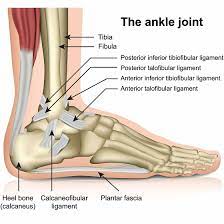PHYSICAL AGENTS: CRYOTHERAPY
2013 Recommendation
Clinicians should use repeated intermittent applications of ice to reduce pain, decrease the need for pain medication, and improve weight bearing following an acute ankle sprain.
Evidence Update
Doherty and colleagues102 concluded that ice, compression, and elevation alone are not effective for improving the primary outcomes of self-reported function or recurrence following acute ankle sprain compared with no treatment. Three systematic reviews included
by Doherty and colleagues102 concluded that treatment success was achieved with exercise therapy combined with rest,
ice, compression, and elevation.

Vuurberg and colleagues451 reviewed 27 trials (n = 1670) and concluded that there was no evidence to support the isolated use of ice to increase function and decrease swelling and pain at rest in individuals with LAS. The combination of ice and exercise results in significant improvements in ankle function in the short term, allowing patients to increase loading during weight bearing compared with standard functional treatment (1 RCT, n = 101). In combination with exercise therapy, ice has a greater effect on reducing swelling compared with heat application in individuals with LAS (1 trial, n = 30).
Evidence Synthesis and Rationale
Since the initial CPG, strong evidence has emerged that rest, ice, compression, and elevation are insufficient to improve self-reported function and injury recurrence in people with an acute LAS. Use of ice in a combined approach to intervention that involves exercise may improve load tolerance during weight bearing, which can improve the ability of individuals to bear weight on the affected limb. Clinicians
should consider individual effects of ice on weight bearing and patient preference to decide whether the application of
ice may be warranted.
2021 Recommendation
Clinicians may use repeated intermittent applications of ice in association with a therapeutic exercise program to address symptoms and functioning following an acute LAS.
 Blog de Fisioterapia Fisioterapia
Blog de Fisioterapia Fisioterapia



